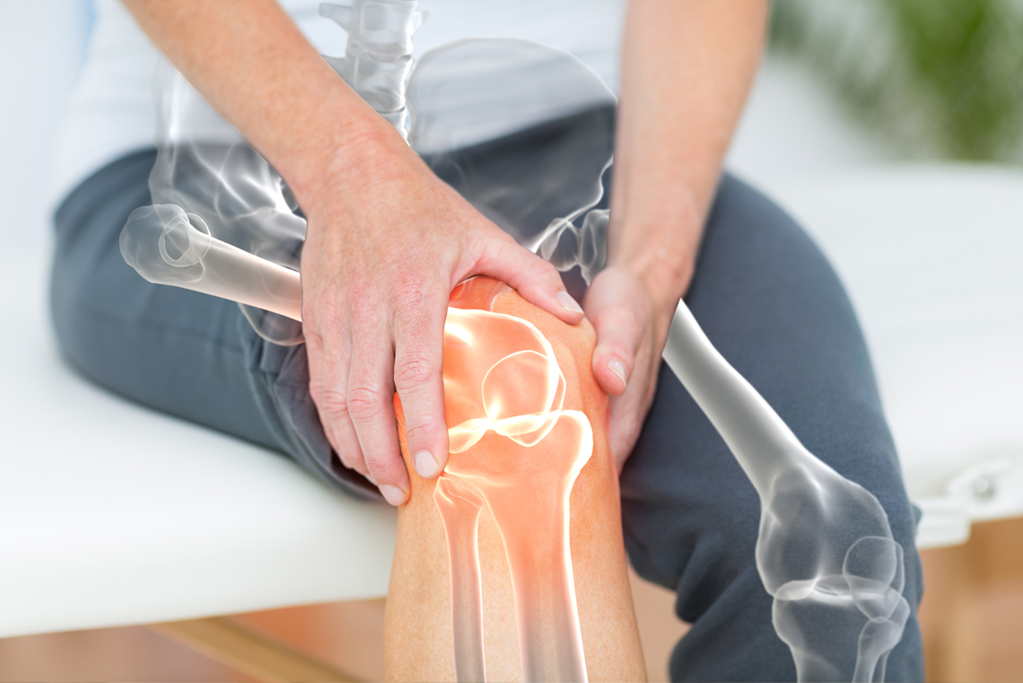Joint Pain whether from age to illness – need not put an end to an active life. Identifying the cause of the pain is the first step towards treating and managing it successfully.

Joint pain doesn’t have to be an inevitable part of ageing. In fact, there is a range of treatment options available to alleviate or lessen aches and stiffness in the joints. The first step is to understand the source of the pain in order to treat not only the pain but the underlying problem causing it.
There are many reasons for joint pain. They range from acute problems that worsen over time to chronic problems that require more sustained management and care. In fact, the term ‘arthritis’ does not refer to a specific disease, but simply describes inflammation of the joints. There are actually more than 100 different forms of arthritis and their causes vary. This is why it is important to have a condition correctly diagnosed before it can be effectively treated.
Wear, Tear and Injury
In most cases, pain in the joints arises from simple wear and tear. This often occurs due to excessive use of the joints or increased stress or pressure on them. Over-exertion from sport or exercise, a sprain due to a fall or other trauma, or even being overweight can cause ‘wear and tear’ arthritis or osteoarthritis.
In those who are overweight, the extra load places added pressure on weight-bearing joints such as the knees, hips and lower back, causing long term pain. Osteoarthritis is also more common in older people because of age-related wear and tear. In some cases, osteoarthritis is due to genetic reasons.
Osteoarthritis is therefore best understood as a disorder or failure of cartilage metabolism. This means the cartilage is more prone to degradation, which is accelerated due to previous joint injury, joint inflammation or increased weight loading.
Auto-Immune Causes Inactivity
A sedentary lifestyle could lead to more bone loss. When astronauts go into space, they lose bone quickly in the weightless (anti-gravity) environment. Patients who are immobilised or bedridden do not use the muscles and bones in their hips and spine, causing rapid bone loss. In other instances, joint pain is due to inflammation caused by an immune system disorder. Infection-fighting chemicals in the body mistakenly ‘friendly fire’ on the cartilage tissues, causing them to degrade.
Some types of auto-immune arthritis include:
- Rheumatoid Arthritis typically affects the lining of small joints in the hands and feet, causing painful swelling. The condition may result in bone erosion and joint deformity.
- Spondyloarthropathy causes back pain, joint pain, heel pain and eye inflammation.
- Reiter’s syndrome causes pain, swelling and inflammation of the joints (especially fingers and toes) after infections. Symptoms may also include fever, weight loss, skin rashes, mouth ulcers and eye inflammation.
- Psoriatic arthritis is associated with psoriasis (scaly red patches on the skin). The rash occurs before arthritis symptoms develop (sometimes years before). The condition tends to affect joints in the fingers, toes, knees, hips and tailbone.
- Enteropathic arthritis affects large joints such as the knees, hips, ankles and elbows, and also involves inflammation of the intestinal wall.
Living Well with Arthritis
There are no drugs to ‘cure’ arthritis, only those that manage the symptoms and reduce the inflammatory response. Because each case is so different, management of the condition is necessarily multidisciplinary and individualised. Again, this underscores the importance of an accurate diagnosis at the start.
Apart from taking short-term medicine to reduce swelling and pain, it is more important to consider disease-modifying medication which controls the immune system.
Lifestyle and habits must be addressed. Losing weight to reduce pressure on joints is the most effective and critical first step. Exercise plays an important role, though it seems counter-intuitive for someone with chronic pain. The idea that exercise will aggravate joint pain and stiffness is not necessarily true. Lack of exercise actually weakens joints, increasing the risk of pain and stiffness.
Exercising keeps the muscles and surrounding tissues strong and able to maintain their supportive function for the bones. Weak muscles mean less support structures to alleviate pressure on the bones; this creates more stress on the joints. Thus, low-impact activities such as cycling, swimming, slow walks, tai chi, yoga, Pilates and resistance training can be highly beneficial. Any movement, no matter how small, can help – even simple stretching, because it increases the joint’s range of motion, fights stiffness and protects the cartilage.
Before embarking on an exercise routine, a doctor and physiotherapist can help tailor a programme to your abilities.
Easy Does It
Start slowly, especially if you have been inactive. Pushing too hard can worsen joint pain. To ease into it, try applying a hot compress to your joints to relax the joints and muscles before you begin. Warm up before increasing the intensity. Exercise with paced and considered movements, with no jerking or straining. If there is any pain, ease off and take a break. To prevent inflammation after exercise, apply ice to the joints as needed. Some aches and minor pains after exercise are normal but if they become intense, consult your doctor.
Apart from medicine to reduce swelling and pain, it is more important to consider diseasemodifying medication which controls the immune system.







